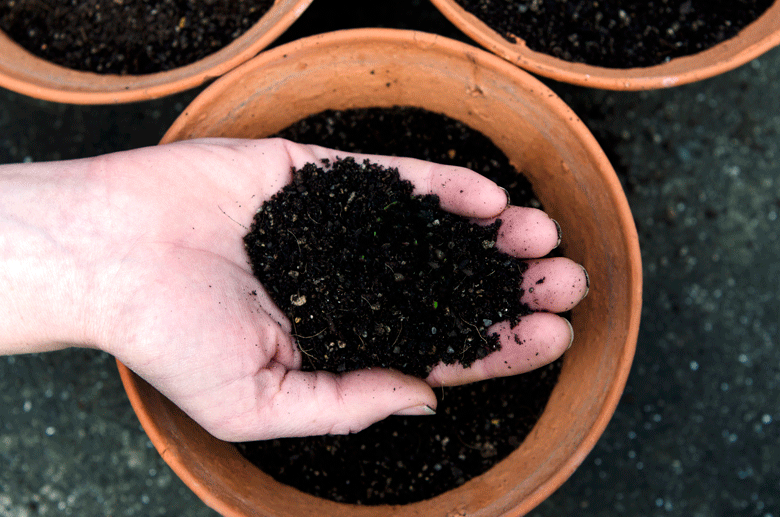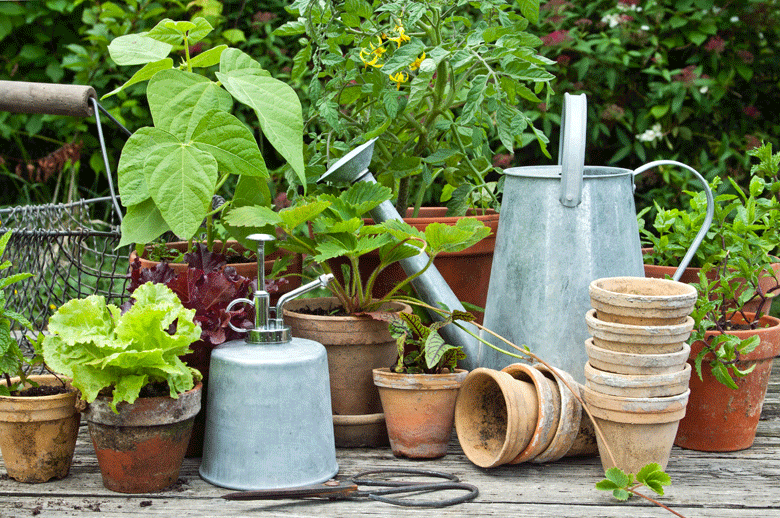New mix for the Rocotos
As part of my series, looking into the finer detail of growing Chillies, I am looking into potting soil. It is particularly fitting to do this now, as the Rocoto’s will be potted on for the first time. To give them the best chance of success, I will use a new potting mix I recently formulated. I believe it has everything they need to thrive. I will also use this mix to repot my other Chillies when they require potting on
This potting mix will only be used for intermediate repotting. It will not be used for final potting on. I will use a different formulation for that.  Final potting-on is the stage when Chillies get potted on for the last time. They are placed in containers specially prepared with nutrients so the plants can achieve vigorous growth. The size of these pots is typically twenty to fifty litres (sometimes even bigger). The plants will remain in these containers until the end of the season.
Final potting-on is the stage when Chillies get potted on for the last time. They are placed in containers specially prepared with nutrients so the plants can achieve vigorous growth. The size of these pots is typically twenty to fifty litres (sometimes even bigger). The plants will remain in these containers until the end of the season.
Intermediate potting, on the other hand, is when seedlings are progressively placed into bigger pots as they grow. The reason this is done is to develop the seedling’s root ball. To do this, seedlings are allowed to grow in smaller pots until their roots start becoming constricted. At this point, they are repotted into a larger pot. A larger pot allows a plant to rapidly expand its root system, as it now has the space to do so. The new pot should be about twice the size of the previous one, nothing bigger. As a rule of thumb, I repot my seedlings once they have reached the same height as the container they are planted in.
Formulating the new mix
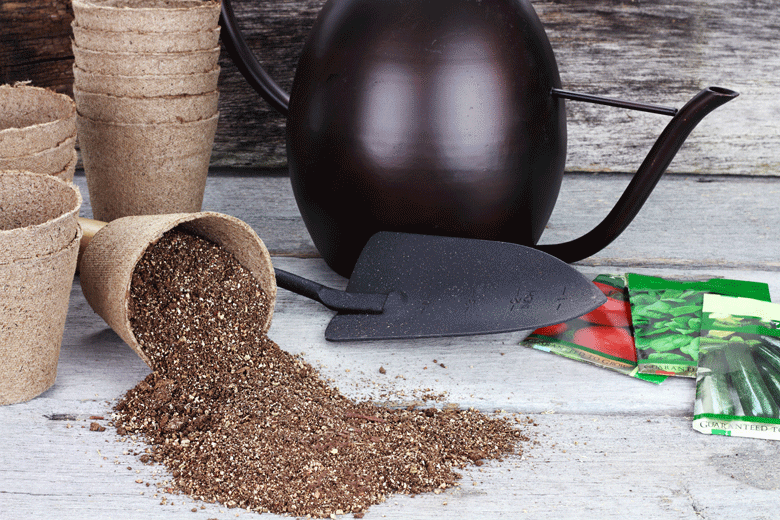
It has to be peat free
In the past, I have only used general-purpose compost, perhaps mixed with some Perlite for intermediate potting on. I have had reasonable success using these potting composts, and they can’t be knocked. However, they have been formulated to cater for a broad spectrum of plants. They are not specifically made to meet the soil conditions that Chillies thrive in. And that’s what I am now aiming to achieve. I want the plants to thrive and be vigorous in their growth.
To make my potting mix, I decided to use off-the-shelf compost as a base and add other elements to it. These added elements need to take things like water retention, drainage and the final PH of the mix. Chillies do better when the PH of potting soil is below seven.
It was also essential to ensure that this potting on compost is peat free. I have committed to becoming peat free in my Chilli growing by next season. Thus, the components I use to make this compost had to meet my peat-free requirements. I will use this peat-free compost together with peat-free fibre pots for the potting on the Rocotos. Fibre pots are made with wood pulp and can be used much, in the same way as peat pots. I aim to make my Rocotos the first variety I bring to maturity using only peat-free materials and soils.
The second consideration was the type of soil that Chillies grow well in. I was looking for soil that is not too sandy. It needed body. On the other hand, if the soil is too dense, that is also a problem. So, I was looking to use a compost base that is fairly loosely textured. What I was aiming to achieve was a compost with enough body to hold nutrients and moisture, but not so dense that the roots of the plants struggle to grow in it.
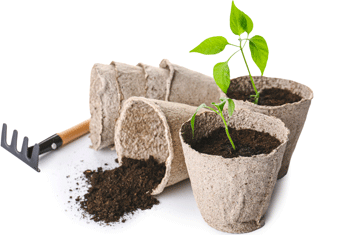 The third element to be taken into account was water retention and drainage. Chillies need water to grow, but they certainly don’t like too much. In fact, the reverse applies. It is actually better to keep Chillies slightly short of water than to give them too much. To achieve the right balance, I used a combination of Coir for water retention and Perlite for drainage. What I wanted was for the roots to have access to nutrients dissolved in water, but I certainly don’t want them swimming in it. The coir will provide the means of retaining the water-dissolved nutrients (which come from adding fertilizer). The Perlite will aid drainage.
The third element to be taken into account was water retention and drainage. Chillies need water to grow, but they certainly don’t like too much. In fact, the reverse applies. It is actually better to keep Chillies slightly short of water than to give them too much. To achieve the right balance, I used a combination of Coir for water retention and Perlite for drainage. What I wanted was for the roots to have access to nutrients dissolved in water, but I certainly don’t want them swimming in it. The coir will provide the means of retaining the water-dissolved nutrients (which come from adding fertilizer). The Perlite will aid drainage.
The final thing to consider was the PH of the soil. Chillies do better when they are in a slightly acidic environment. My research suggests the PH range that is optimum for growing Chillies is 5. 5 to 6.8. It seems 7 is the absolute maximum PH, and the aim should be to achieve somewhere between the two levels. If the PH value of all the other components didn’t add up to my target of about 6.5 PH, chemicals like garden lime or magnesium sulphate would be required to adjust the value
So, let’s make some potting mix

Coir, Perlite and lime
The compost I am using as the base has all the qualities I was looking for in terms of texture and body. It is fine textured and light, which is important if the seeds planted into it are to get enough air. It is also peat free
I have decided that my potting mix will contain about twenty percent of Coir. I am using already rehydrated Coir. It is possible to buy it in brick format and hydrate it, but in this particular instance, I chose bagged Coir soil. The manufacturer prewashed the coir soil I bought to remove salt. This was an important consideration, as many cheaper Coir soils have a lot of salt in them. They need to be extensively rinsed before use.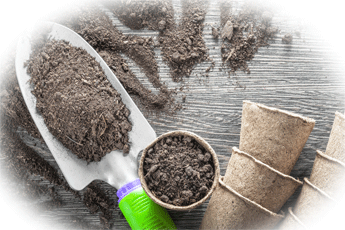
I added four large trowels of Coir to twelve trowels of base compost and two trowels of Perlite. I made sure everything was well mixed and then sprinkled the mix with deionized water.
After mixing and applying another sprinkling of water, I took a PH reading with my newly acquired PH meter. While the soil’s initial PH reading without the Coir and Perlite was 5 to 5.5 PH, once I had added these components, the PH had become a constant 5. 5 PH. It had changed a bit, but not much. Perlite alone has a PH of 7 and Coir a neutral pH range of 7. To achieve my optimum range of between 5.5 and 6.6 PH, I needed to up the PH. To do this, I added three tablespoons of fine powder garden lime and mixed it in well. The next day when I tested, the PH had risen to 6. The PH will however increase as time goes on. Had I wanted to lower the PH, I would have added Aluminium sulphate.
And voila, there it was. A repotting mix for Chillies. This is however just a starting point. I will use this mix to see how it goes. In the future, I might adjust the percentages of Coir or the Perlite I add if there seems to be a benefit. I will monitor the PH levels of this soil over the next couple of weeks to determine if the dosage of lime needs to be adjusted to achieve my objective of about 6.5 PH.
Finally
I will need to remember that Coir dries out more easily than peat. It also doesn’t become as clear by visual inspection (as it does with peat), the potting soil is drying out. To prevent under-watering. It will be essential to keep on top of my watering. I will use my normal bottom feeding method, combined with regular moisture checks with a moisture meter. This should ensure that this will not become a problem.
In my next post, I will cover water. Tap water contains salts, minerals, chlorine and fluorine. This makes municipal water unsuitable for watering Chillies. The results achieved by using purified water to be deionised and osmosis reversed, or a combination of the two can be remarkable. I will be researching this and discuss my findings in my next post about fertilizers.

